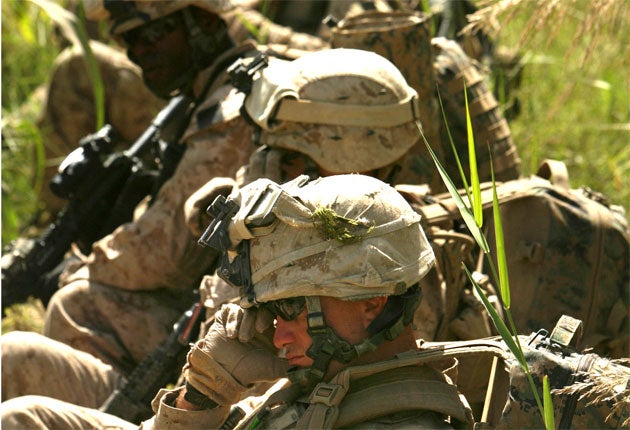How PTSD treatment can learn from ancient warrior rituals
The difficulties that soldiers face when returning home from battle is nothing new. And as Karen O’Donnell writes, ancient societies might have a thing or two to teach us about how to help those who struggle after war

As many as 7 per cent of armed forces personnel suffer from post-traumatic stress disorder and that figure is expected to rise as the full impact of a decade of war in the Middle East makes itself felt. But, while government failure to tackle the rise of PTSD among military personnel is the shame of our society, the disorder as a side effect of war is not a new thing.
The language we use to describe the experience of PTSD might be modern – it was only introduced into the medical dictionary in 1980 – but ancient cultures were well versed in it. Many had rituals to help ease the ruptures experienced by those traumatised by warfare, which we could learn from today.
Coming home from war is difficult. Reintegration into civilian life, especially, is hard. The difficulty of warriors returning home from battle is an old, old story. The psychiatrist Jonathan Shay outlines the nature of this old story in his analysis of the tale of Odysseus in Homer’s Odyssey.
After victory at Troy, it takes Odysseus ten years to make it home and when he does he is a different man – quite literally, thanks to the disguise he wears. He is emotionless and blank in the face of his wife’s distress. He mistrusts those around him and is uncomfortable in a crowd. The valid adaptations to danger, which kept Odysseus safe during wartime, have persisted into a time of safety. This is a classic experience of PTSD; Odysseus has suffered the three traumatic ruptures of self, time, and cognition.
Three ruptures
These three ruptures characterise the experience of trauma. First, trauma ruptures a person’s sense of identity. They no longer know who they are. They struggle to identify with the person they were before they experienced the trauma. They may even feel that that person is dead. In the aftermath of trauma, there is therefore a need for people to redefine themselves and their relationship with the world they used to know.
The second rupture is one of time. For many sufferers of PTSD, the past continues to invade the present in the form of repeated nightmares, flashbacks, and repeated experiences of the trauma. The sufferer of PTSD lives in the shadow of the trauma, never quite knowing when it will rear its head once again. Recovery must therefore begin in a place of bodily safety and security.
The third rupture caused by trauma is a rupture in cognition. This is characterised by a failing of words and an inability to talk about the experience that they’ve had because it doesn’t make any sense to them. This applies to both their ability to talk about what they experienced, as well as how they feel. Not being able to talk about it is incredibly detrimental to the recovery process.
Ritual cleansing
Ancient cultures understood better than us the need to aid warriors when they returned from war and many had rituals that helped heal these ruptures. For example, in Rome, the vestal virgins would bathe returning soldiers to purge them of the corruption of war. The Maasai warriors of East Africa had purification rites for the homecoming of their fighters. The Native Americans held sweat lodge purification rituals for returning warriors in which their stories could be told and their “inner pollution” could be left among the hot stones, evaporating into steam and cleansing the warrior.
In the Judeo-Christian tradition, there is some understanding of the need to purify soldiers after warfare, too. In the Bible, the Hebrews are instructed to purify themselves before entering back into the camp after battle. This process also found its way into Christian penances.
In medieval warfare, all those who fought in battle were required to do penance (confess their sins, receive absolution, and make an outward expression of their repentance), even those who did not kill. Those who did kill were required to undertake extra penances. This requirement was obviously connected to the need to assuage a sense of guilt and culpability – giving relief from shame.
These ancient cultures understood something fundamental about returning soldiers and PTSD and mobilised the rituals of their cultures to support their transition and heal their traumatic ruptures. A similar effort is needed to support armed forces personnel today.
The beginning of a military career is characterised by ritual. Daily patterns, drills, uniforms, and passing out parades mark out the first few months of life in the armed forces. But coming home after war is a different story. A ritualised homecoming, drawing on the practices of faith where appropriate, might help to promote the healing of PTSD.
This article first appeared on The Conversation (theconversation.com). Karen O'Donnell is a research fellow in digital pedagogy (theology), at Durham University
Subscribe to Independent Premium to bookmark this article
Want to bookmark your favourite articles and stories to read or reference later? Start your Independent Premium subscription today.

Join our commenting forum
Join thought-provoking conversations, follow other Independent readers and see their replies